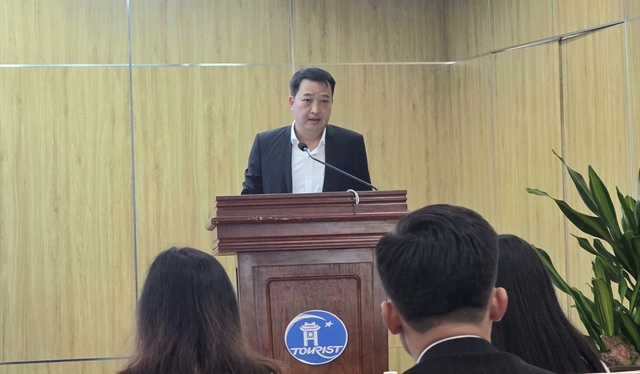Wood industry urged to develop vertical, horizontal linkages
Wood industry urged to develop vertical, horizontal linkages
The various components of the woodworking industry’s supply chain need to establish close links to ensure the industry’s sustainable development, an expert has said.

Such linkages would bring many benefits, including efficient utilisation of resources, increase in specialisation, reduction in risks, more market opportunities and higher profits, To Xuan Phuc of the sustainable forestry NGO Forest Trends organisation, said.
He was speaking at a forum held in HCM City last week by the Handicrafts and Wood Industry Association of HCM City, Forest Trends, and the Forest Products Association of Binh Dinh.
There are around 4,300 businesses in the Vietnamese woodworking industry employing thousands of workers, he said.
But vertical and horizontal linkages in the industry, including links between wood processors, timber suppliers and forest growers, and between firms in the same sector, remain weak mainly due to a lack of trust and fair sharing of benefits, he said.
It is one of the country’s key export industries, with export revenues going up every year and expected to continue rising in the coming time, he said.
“But there remain some systemic shortcomings that affect the sustainable development of the industry.”
Vietnamese companies tend to invest in the entire production chain, which often means the investment is spread too thin, technologies are mismatched, and there is no specialisation at any stage in the supply chain, he said.
Besides, there is no supporting industry for the woodworking industry, and as a result its productivity is much lower than in Thailand or Malaysia, he said.
A shortage of raw materials also threatens the sustainable development of the industry.
Dien Quang Hiep, chairman and director of MIFACO Co., Ltd, said: “A majority of firms in the industry are small or medium-d, and if we do not link up we [cannot] compete with large foreign firms.”
These linkages would determine the very survival of the industry, he said.
The businesses in the industry are scattered and so it is hard for them to link up and work together, he said.
The creation of a wood processing industry cluster would provide companies the opportunity to share information, resources and export orders, he said.
This needs support from the Government and localities, he said.
Vo Quang Ha, general director of Tan Vinh Cuu Joint Stock Company (Tavico), said to successfully forge linkages, enterprises must have the same direction and a common goal.
They need to discuss ways to develop linkages and avoid conflicts, he said.
The association must play a greater role as an intermediary to bring them together for mutual benefit, he said.
Companies should establish close links with households that grow forests to ensure a steady source of timber and reduce risks, delegates told the forum.
Nguyen Quang Vinh of the Viet Nam Timber and Forest Product Association, said planted forests have become the main source of timber for Viet Nam’s wood processing industry.
To develop a legitimate source of timber, some linkages have been established between wood processing companies and households growing forests, he said.
For instance, companies making products for IKEA Group, one of the world’s largest wood products company -- such as Nam Dinh Forest Products JSC (NAFOCO), Woodlands JSC, and Scansia Pacific -- have tied up with households in Phu Tho, Tuyen Quang, Yen Bai, and Quang Tri to grow forests certified by the Forest Stewardship Council, he said.
They use the certified sustainable wood to make products for IKEA, he said.
This model helps improve benefits for the households and ensure a steady supply of timber for the companies, he added.





















